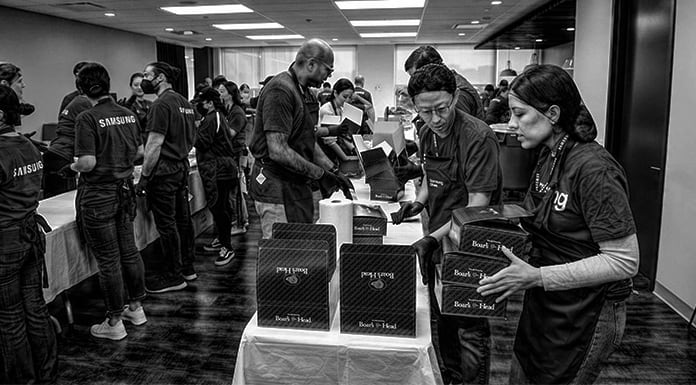Nowadays, Samsung has a clean image. In Android smartphones, Samsung is regarded as the King. This year, Samsung Electronics was ranked as a Top Five Best Global Brand. They have held this position for 4 years straight. However, Samsung’s past image was not as pristine as it is today. It was riddled with scandals, controversies, recalls, and intense competition.

In earlier days, alongside their modern and innovative image, there were also many scandals related to them. As the internet and awareness among people started growing, it slowly became evident that behind Samsung’s innovative facade lay a dark truth not known to many even today. Therefore, today we will discuss “The Samsung Story They Don’t Want You to Know.”
Exploiting Workers to Fuel Growth
Samsung’s rise has been fueled by its manufacturing prowess – it operates factories in low-cost regions like Vietnam to produce components and assemble devices. But this expansion comes with costs. In 2012, a Samsung executive visiting the company’s Vietnam facilities noticed a horrid smell.

He eventually traced it back to stockpiles of expired carbon filters from the plant’s air filtration system. Further digging revealed that the factory lacked even basic wastewater treatment, dumping chemicals directly into local rivers.
The executive reported these violations up the chain of command, but no action was taken. It was not until 2016, when a Vietnamese NGO published a shocking report on the “Stories of Women Workers in Vietnam’s Electronics Industry,” that the allegations of misconduct and illegal activity finally came to light.
Local reports soon added claims of laborers working over 70 hours a week in terrible conditions. Samsung’s reliance on exploited foreign labor enabled its meteoric rise, while simultaneously staining its reputation.
The Galaxy Note 7: Samsung’s Explosive Mistake
In August 2016, Samsung was flying high as its new iPhone competitor – the Galaxy Note 7 – hit stores. But in September, dozens of phones exploded or caught fire due to battery issues. With the threat of serious burns and injury, Samsung and the US Consumer Product Safety Commission issued an emergency recall of 2.5 million Note 7s.

While recalls in the smartphone industry are not unheard of, the Note 7 problem was amplified by Samsung’s poor handling. Their disorganized, reactionary response led customers to question company priorities and technical ability. Rumors spread that Samsung may have rushed an unready phone to market to compete with Apple’s iPhone 7 launch.
Ultimately, in one of the tech industry’s biggest blunders ever, Samsung managed to recover nearly $17 billion worth of premium phones. This dragged down profits by 30% that quarter. The ordeal proved costly, setting smartphone innovation back while denting Samsung’s reputation as a premier electronics manufacturer.
Facing Off Against Heavyweight Competitors
Beyond major hardware defects and human rights violations, Samsung also faces intense competition in consumer tech. As a competitor, Apple tracks and even beats Samsung’s latest developments while keeping higher profit margins on premium devices. Chinese manufacturers like Xiaomi and Huawei also undercut Samsung’s pricing power in the mid-range segment.
Battling competitors forces constant, rapid-fire phone launches from Samsung across every price point. Intensive development cycles leave no breathing room between releases, putting engineering resources at risk and increasing the chance of defects slipping through the cracks to end users.
Through strategic integration tactics like its foundry division fabricating both its Exynos phone chips and displays, Samsung has reinforced control over its supply chain. Critics say this monopolization and consolidation of components stifles innovation in the market. Regardless, locking in house-made sourcing has been key to matching more competitive rivals software-wise while maintaining Samsung’s dominance across the smartphone market for years.
What’s next – more innovation or imitation?
Given its success in tough competition, some say Samsung’s strategy of following trends proves the power of fast execution with strong hardware capabilities. However, as phones become more similar and more innovative form factors emerge, Samsung will need to step into untested territory. This will enable it to maintain strong leadership for the next decade of devices.
Foldables and wearables may revolutionize the industry in ways not seen since the original iPhone. Will Samsung’s hit-driven product cycle allow bold experimentation in these frontier segments? Or will risk aversion allow opportunistic competitors to set the pace for true breakthrough innovation going forward? Perhaps balancing both approaches is Samsung’s best bet – refining successful designs that customers love while pioneering the next era of consumer electronics behind the scenes.
With a large scale comes significant responsibility. As Samsung steps further into the spotlight at the top of tech, its manufacturing ability must be matched by integrity, quality, and imagination. Taking on the inevitable challenges that lie ahead.